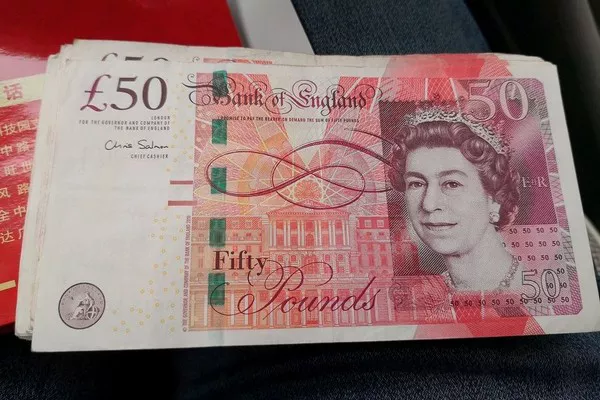In the United Kingdom, coins play a significant role in everyday transactions, but not all coins hold the same value forever. Over time, certain coins are withdrawn from circulation, either due to changes in design, composition, or simply as a result of wear and tear. Understanding which UK coins are no longer valid is crucial for both consumers and businesses to ensure smooth transactions and financial accuracy. In this article, we’ll delve into the coins that have been demonetized in the UK, why they were phased out, and how you can identify them.
The Phased-Out Coins:
In the UK, the demonetization process occurs when certain coins are officially withdrawn from circulation and are no longer considered legal tender. Over the years, several coins have undergone this process due to various reasons, such as being replaced by newer versions, deemed no longer cost-effective to produce, or susceptible to counterfeiting. Let’s explore some of the notable coins that are no longer valid:
1. The Round £1 Coin:
Background:
The round £1 coin, introduced in 1983, was a staple of UK currency for over three decades. However, concerns over its vulnerability to counterfeiting prompted the Royal Mint to introduce a new 12-sided £1 coin in 2017, equipped with enhanced security features.
Reason for Demonetization:
The decision to phase out the round £1 coin was primarily driven by the need to combat counterfeiters. By introducing a coin with advanced security measures, such as bi-metallic construction and holograms, the Royal Mint aimed to enhance the integrity of the currency and protect consumers from fraud.
Identification:
The round £1 coin ceased to be legal tender on October 15, 2017. Consumers can easily identify the outdated coin by its circular shape and single metal composition. Any round £1 coins discovered after the demonetization date should be exchanged at banks or post offices, or deposited into personal or business accounts.
2. The Halfpenny:
Background:
The halfpenny, worth half of a penny, was a denomination in the UK currency system until its withdrawal in 1984. It had a long history, dating back to the Anglo-Saxon period, but diminishing purchasing power and production costs led to its discontinuation.
Reason for Demonetization:
The declining value of the halfpenny, coupled with rising production costs, rendered it impractical to maintain in circulation. Additionally, as inflation eroded its purchasing power, the coin became less relevant in daily transactions, ultimately leading to its withdrawal.
Identification:
The halfpenny ceased to be legal tender on December 31, 1984. While it may no longer be encountered in circulation, collectors may still come across these coins in numismatic collections or historical displays. As with other demonetized coins, the halfpenny cannot be used for transactions and should be exchanged at banks or numismatic dealers.
3. The Crown:
Background:
The crown, a large-denomination coin equivalent to five shillings, was once a prominent part of UK currency. However, its usage declined over time, and it was eventually relegated to commemorative issues rather than circulation coins.
Reason for Demonetization:
As the UK transitioned to decimalization in 1971, the crown lost its role as a circulating denomination. While commemorative crowns continued to be minted for special occasions, such as royal events or anniversaries, they were not intended for everyday transactions.
Identification:
The last circulating crown issued for general circulation was minted in 1965. Since then, any crowns encountered are likely commemorative coins issued for collectors or special occasions. While they hold value as collectibles, they are not legal tender and cannot be used for transactions.
The Importance of Staying Informed:
Understanding which UK coins are no longer valid is essential for both consumers and businesses to avoid inconvenience and financial loss. While demonetized coins may hold historical or collectible value, they are no longer accepted as legal tender and should be exchanged or deposited accordingly. Staying informed about changes in currency and regularly checking for outdated coins can help ensure smooth transactions and financial accuracy.
FAQs (Frequently Asked Questions):
Q1: Can I still spend or exchange demonetized coins?
A1: No, demonetized coins are no longer accepted as legal tender and cannot be used for transactions. However, they can typically be exchanged at banks, post offices, or numismatic dealers, depending on the specific coin and its value.
Q2: How can I identify demonetized coins?
A2: Demonetized coins often have distinct characteristics, such as outdated designs, denominations no longer in circulation, or specific demonetization dates. Referencing official sources, such as the Royal Mint or financial institutions, can help verify the status of coins.
Q3: Are demonetized coins valuable as collectibles?
A3: While demonetized coins may hold historical or numismatic value, their worth as collectibles depends on factors such as rarity, condition, and demand among collectors. Professional appraisals or consultations with numismatic experts can help determine the value of demonetized coins.
See Also Will the British Pound Recover? Analyzing Factors
Conclusion:
As the UK currency evolves, certain coins are phased out of circulation, necessitating awareness and understanding among consumers and businesses. By familiarizing oneself with which UK coins are no longer valid and the reasons behind their demonetization, individuals can navigate financial transactions with confidence and accuracy. Staying informed, regularly checking for outdated coins, and seeking guidance when needed are essential practices in managing currency effectively.


